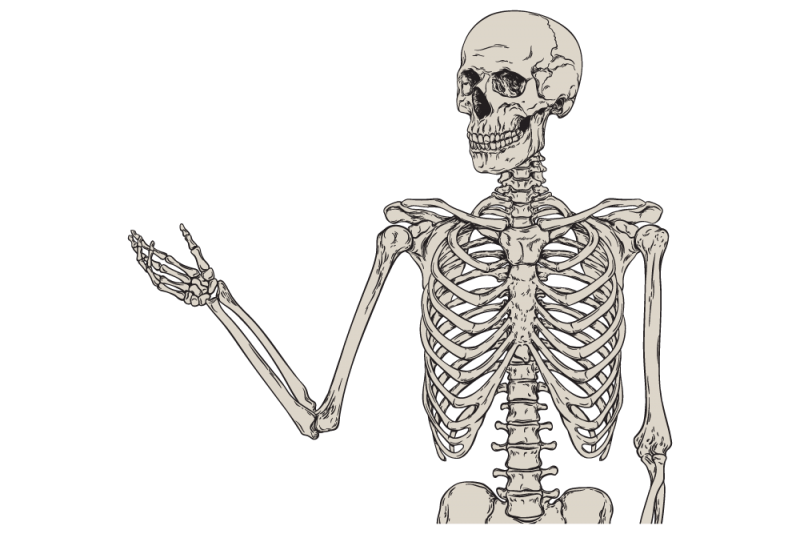Bone is a Truly Remarkable Part of the Body
Despite having dealt with bones for so long, I still find it a truly remarkable material. Here are a few facts and figures…
- Despite being 30% water, bones are, weight for weight, four times as strong as concrete. This makes them stronger than some types of steel, but much lighter due to their lower density (otherwise it would be impossible for us to actually move). Bone strength peaks around the fourth decade of your life, then starts to decrease.
- The strongest bone in the body is usually considered to be the femur, which can withstand loads up to 1800kg. However, depending how strength is defined (for example, whether it be compressive, textile, or torque strength,) the mandible (or jaw bone) could also be classified as the strongest bone. Humans can exert a bite force between 1,100 and 1,300 Newtons, which is stronger than the orangutan or gibbon but weaker than gorillas or chimps.
- Bones comprise only 14% of body weight – so although the excuse ‘I’m just big-boned’ might sound good it doesn’t bear any weight (sorry!)
- A newborn has 300 bones. By adulthood, this number has reduced to 206, the result of bones fusing. The skull is an obvious example – cranium bones aren’t fused to allow moulding and movement as the baby passes through the birth canal, and to allow room for the brain to grow. Other examples include leg and arm bones. This allows for continued growth, and to help reduce injury when a baby falls over. Ten seperate bones fuse to form the sacrum and coccyx, along with the ischium and pubic bones which fuse into the pelvis. Some facial bones also fuse.
- A baby’s head is one quarter of its length; by adulthood, it is only one eighth.
- A baby lacks kneecaps; they appear between the ages of 2-6.
- The human skeleton is a living, dynamic framework, renewing itself on average four times a year.
- Between them, feet and hand contain nearly half the bones in your body. Hands have a total of 27 bones each, feet 26.
- Our skeleton has 230 movable and semi-movable joints. Your fingers will bend approximately 25 million times in you lifetime.
- Still on fingers, they can support your entire body weight.
- The hyoid bone, in the throat, is the only bone not attached to any other bone. It provides attachment to the muscles of the floor of the mouth and the tongue above, the larynx below, and the epiglottis and pharynx behind. Its name is derived from the Greek hyoeides, meaning ‘shaped like the letter upsilon (υ)’.
- The femur (thigh bone) is the fastest growing bone in the body. It is also the longest, making up around a quarter of your height.
- The length of your foot is the same length as from your wrist to the inside of your elbow.
- The smallest bone in the body is the stapes of the middle ear, which measures 2-3 mm.
- The most common bone to be broken is a toe bone; almost everyone will do so at some stage.
- The person to hold the record for the most bones broken is Evel Knievel, who by the end of 1975 had suffered 433 fractures (which probably doesn’t include broken toes).
There are some other interesting articles about bone in our blog.


Leave A Comment
You must be logged in to post a comment.